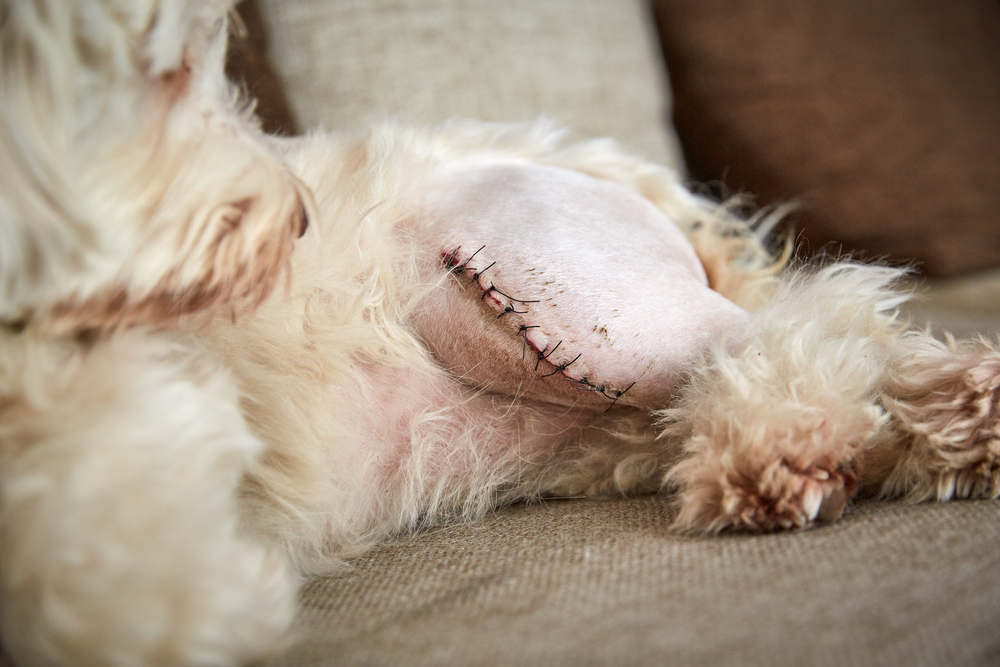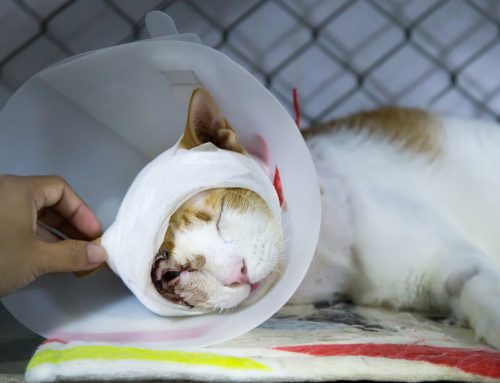Luxating patellas (i.e., trick knees) can affect your four-legged friend, causing discomfort and affecting their mobility. As a pet owner, particularly of a toy- or small-breed dog, you need to be aware of this condition. Our Neighborhood Veterinary Centers of Nederland team wades in knee-deep to provide you with everything you need to know about pets’ luxating patellas.
Luxating patellas in pets
The patella (i.e., kneecap) is normally situated in the trochlear groove that lies at the end of the femur (i.e., thigh bone). When the patella luxates, the bone moves out of place or becomes dislocated. So, if your pet has a luxating patella, their kneecap will pop out of place. Oftentimes, a pet owner will notice their pet running along on three legs, then return to a normal four-legged gait as though nothing happened. Or, a pet may kick out their leg, and the kneecap will pop back into place.
Luxating patella risk factors for pets
Luxating patellas can occur in any canine or feline breed, but certain factors increase the risk. Small dog breeds are often predisposed to this condition, with genetics playing a significant role. Toy and miniature breeds, such as Chihuahuas, Pomeranians, and Yorkshire terriers, are commonly affected. Additionally, improper nutrition, muscle weakness, and traumatic injuries can contribute to a pet developing luxating patellas.
Luxating patella signs in pets
You should learn to recognize luxating patella signs, so you can ensure your pet receives early intervention. Watch out for the following issues that may signify a luxating patella:
- Limping or lameness — Lameness or limping on one or both hind legs can mean your pet has luxating patellas.
- Intermittent hopping — Pets with this condition may lift their affected leg while walking, and the motion resembles skipping.
- Discomfort or pain — Your pet may seem painful and become irritable, reluctant to jump or play, or may vocalize excessively.
- Swelling or warmth — In some cases, swelling or warmth develops around the affected knee joint.
Luxating patella diagnosis in pets
Our Neighborhood Veterinary Centers of Nederland team can usually diagnose a luxating patella solely through a physical exam. In many instances, a luxating patella is identified incidentally during a routine wellness exam or an exam for another health concern. A luxating patella can also be detected on diagnostic imaging, such as X-rays, computed tomography (CT) scans, or magnetic resonance images (MRIs), but imaging is often not necessary for an accurate diagnosis.
Once your veterinarian diagnoses your pet’s luxating patella, they can grade the condition’s severity, ranging from grade 1 (mild) to grade 4 (severe). Grading is based on the dislocation extent and whether the kneecap can return to its groove.
Luxating patella treatment in pets
The luxating patella treatment approach depends on the condition’s severity and your pet’s overall health. Therapies may include:
- Conservative management — Mild cases may be managed with weight control, physical therapy, and joint supplements. Keeping your pet at an ideal body weight reduces knee stress, while physical therapy exercises strengthen muscles and improve joint stability and function. Adding joint supplements can further support joint health and alleviate inflammation.
- Medications — Nonsteroidal anti-inflammatory drugs (NSAIDs) may be prescribed to alleviate pain and reduce inflammation associated with luxating patellas, while additional drugs can manage discomfort other pain pathways cause.
- Surgical intervention — Severe cases, usually grades 2 to 4, may require surgery to correct the patella’s alignment and prevent further dislocations.
- Postoperative rehabilitation — After surgery, a rehabilitation plan may include physical therapy to help your pet regain strength, flexibility, and range of motion in the affected limb.
Luxating patella prevention in pets

While some risk factors, such as genetics, are beyond your control, you can help minimize your pet’s luxating patella risk. Follow these tips:
- Maintaining your pet’s healthy weight — Obesity increases your pet’s orthopedic issue risk, including luxating patellas. Feed your pet a balanced diet and provide regular exercise to keep them at a healthy weight.
- Scheduling your pet’s regular veterinary checkups — Routine veterinary visits allow early detection and intervention, minimizing the condition’s impact on your pet’s quality of life.
- Choosing a pet who has received genetic screening — If you’re considering adding a new furry member to your family, choose a reputable breeder who conducts genetic screenings to reduce the risk of an inherited condition such as luxating patella.
If your pet is exhibiting an orthopedic issue, such as lameness, discomfort, or an abnormal gait, schedule an appointment with our Neighborhood Veterinary Centers of Nederland team.






Leave A Comment